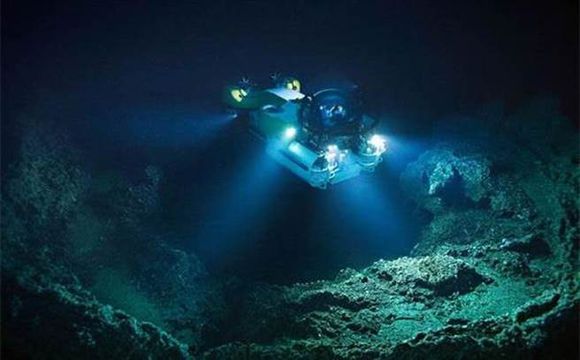This is Scientific American — 60-Second Science. I'm Julia Rosen.
Got a minute?
The Mariana Trench is the deepest spot in the world's oceans. Only three humans have ventured into the trench in submersibles. But plenty of our pollution has made the voyage to the bottom of the sea: a new study finds that critters living more than six miles below the ocean surface contain high levels of harmful compounds like polychlorinated biphenyls, or PCBs, and flame retardants.
"An important thing is that, if you're in the deepest place in world, there's no place to go."
Alan Jamieson, a marine ecologist at Newcastle University in the U.K.
"You can't be disturbed horizontally. You can't go back up. So, for every nanogram of pollutant that's gone into the deep sea, there's no mechanism to put it back again. So, of course the values are going to be high, cause it's only a one way traffic, right?"
Jamieson and his colleagues used robotic traps to collect deep-sea amphipods living in the most remote parts of the oceans. These creatures look a bit like shrimp, and they're well adapted to their extreme environment, he says.

"The deep sea-ones are incredible scavengers. This is why they thrive in the deep sea, because it's a low-food environment where most of their food comes from dead carcasses raining from the surface or particulates coming down. So, everything from an organic particle to a dead whale is fair game to an amphipod."
The food that floats down to the ocean bottom carries man-made contaminants, including PCBs, which entered the surface ocean from rivers and coastlines. Companies stopped manufacturing these chemicals in the 1970s, after they were found to be dangerous. But they don't break down easily, so they're still swirling around in the oceans and working their way down to the seafloor, where amphipods gobble them up.
The research was published in the journal Nature Ecology and Evolution.
In many surface-dwelling species, PCBs have been shown to interfere with animals' abilities to reproduce. Jamieson says they don't have enough data yet to know how deep-sea amphipods are faring, because they're much harder to study. But he says that wasn't his motivation for studying pollutants in the deep ocean.
"The point is that they are there. It's to challenge people's perception that the deep sea is not exempt from what's happening in the rest of the world. And that's a perception we hear quite a lot of."
Thanks for listening for Scientific American — 60-Second Science Science. I'm Julia Rosen.












